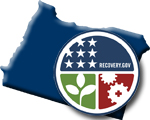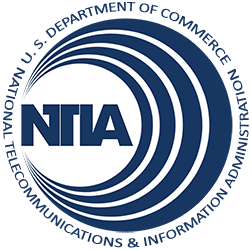While the City of Bend, the largest city in Oregon east of the Cascades, has a high-speed, city-wide wireless broadband network, the surrounding economically distressed areas of central Oregon lack adequate broadband connectivity. BendBroadband’s Central Oregon Fiber Alliance project is a partnership with the local communities of Madras, Prineville, Sunriver, and LaPine as well as key health, educational, public safety, and business development entitites that plans to create a comprehensive, regional 40 Gbps fiber ring.
Oregon

| Grantee | Total Award | Type |
|---|---|---|
| Bend Cable Communications, LLC (BendBroadband) | $4,418,765 | Infrastructure |
| Communication Service for the Deaf, Inc. | $14,988,657 | Sustainable Adoption |
| County of Clackamas | $7,804,181 | Infrastructure |
| County of Crook | $3,908,064 | Public Computer Centers |
| Lane Council of Governments | $8,325,530 | Infrastructure |
| One Economy Corporation | $28,519,482 | Sustainable Adoption |
| Portland State University | $3,318,031 | Sustainable Adoption |
| Public Utility Commission of Oregon | $5,658,302 | Broadband Data & Development |
| University Corporation for Advanced Internet Development | $62,540,162 | Infrastructure |
| ZeroDivide | $1,384,242 | Sustainable Adoption |
Broadband’s ability to expand educational and employment opportunities is especially meaningful for Americans who are deaf or hard of hearing, a community that faces unique challenges in education and that suffers from a rate of unemployment much higher than the national average. Communication Service for the Deaf, Inc. (CSD) intends to expand broadband adoption among people who are deaf and hard of hearing and provide them with online tools to more fully participate in the digital economy. The project proposes to employ a combination of discounted broadband service and specialized computers, technology training from an online state-of-the art support center customized to the community’s needs, public access to videophones at anchor institutions from coast to coast, and a nationwide outreach initiative. Thousands will gain online access to all the Internet has to offer, including sign language interpreters, captioned video services, and other content and functionalities designed especially to advance their educational, employment, and healthcare interests.
The County of Clackamas, in the Mt. Hood region of north-central Oregon, launched the Clackamas Broadband Innovation Initiative to bring affordable high-speed broadband to 156 community anchor institutions countywide. The project, a 180-mile network of new fiber optic cable, aims to provide speeds as high as 1 Gbps to K-12 schools, community colleges, and libraries, enabling distance learning applications and other educational services that they are currently unable to utilize. Clackamas County expects to connect at least 90 schools and two community colleges directly to the project’s middle mile network, along with 36 public safety entities, four health care providers, eight city halls, and ten libraries.
Crook County covers 3,000 square miles in a rural, high desert and forest area of central Oregon with spotty broadband availability and the state’s highest unemployment rate following recent declines in forestry, tourism, and manufacturing. The County has partnered with a wide range of community organizations from the public, private, and nonprofit sectors to plan and propose a new, 65-station computer learning center to be built in Prineville, the county seat. It will be open to the public more than 90 hours per week and will provide the county’s 25,000 residents with education, training and broadband access at a minimum speed of 10 Mbps, eventually reaching 100 Mbps. The Crook County Computer and Education Center project also plans to deploy a mobile lab with satellite connectivity and 12 mobile workstations to provide instruction and training to remote areas of the county.
The Regional Fiber Consortium Lighting the Fiber project proposes to enhance an existing fiber-optic backbone and deploy 124 miles of fiber-optic network to deliver broadband capabilities across three large, mostly rural counties -- Lane, Douglas, and Klamath -- and the Klamath Tribal regions, in Western Oregon. The project plans to enhance education, healthcare delivery, job training, and government services by providing 100 Mbps connections for more than 100 community anchor institutions, including medical centers, public safety entities, schools, community colleges, and libraries. The project also expects to spur new or improved high-speed Internet access for local consumers, including an estimated 104,000 households and 6,000 businesses, by enabling local Internet service providers to connect to the project’s open network.
The 21st Century Information and Support Ecosystem project proposes to implement a comprehensive program of computer training, wireless Internet access, broadband awareness marketing, and online content and applications to residents of 159 affordable and public housing developments and low-income communities in 50 cities and towns across 31 states and the District of Columbia. The project plans to implement four principal programs: training 2,500 youth to become “Digital Connectors” who will then provide digital literacy training to others in their communities; deploying localized broadband networks in public housing developments; developing online content and applications aimed at low-income, low-literacy audiences.
Partnering with adult literacy and basic education organizations with long histories in their respective states, Portland State University proposes to lead the Learner Web Partnership project to increase broadband use among low-income, minorities, and other vulnerable populations by teaching digital literacy along with English literacy, educating participants to become informed consumers, and providing access to career paths in the digital economy. Project partners will deploy the existing Learner Web software, which has been cited by the U.S. Department of Education’s Office of Vocational and Adult Education as a noteworthy adult education program, for more than 20,000 residents. Instructional materials will address topics including use of broadband for job searches, education and health information, and smart consumer practices. The project proposes a distinctive focus on the needs of adult learners using an approach that combines self-paced learning with live tutorial support.
Project Components
State Capacity Building:
The Public Utility Commission of Oregon (PUC) in partnership with the Governor’s state broadband council (Oregon Broadband Advisory Council) will assess needs and create long-term goals for the state and local communities. The PUC will request feedback from local communities and will also collaborate across all state agencies to ensure ownership by all stakeholders.
Technical Assistance:
The PUC plans to develop a program that, through the use of broadband and technology, will help ensure the long-term survival of Oregon’s rural small businesses. By providing much-needed technical assistance to rural businesses in partnership with the Oregon Small Business Development Center Network (OSBDCN), will support small businesses that require broadband-based and technology skills training in order to continue their growth and compete regionally in a global marketplace. OSBDCN will provide focused training to help these organizations incorporate broadband and IT into their businesses. Participants will receive technology training in areas such as technology planning, web-enabled supply chain dynamics, and online analytics.
Application Usage and Development:
This proposed partnership with the Association of Oregon Counties provides technical training and consulting on e-government and broadband applications to local governments throughout the state to accelerate their adoption of new web applications. The state has made it a key priority to improve access to the informational benefits of broadband to citizens and increase demand. Specific examples of improvements could include online bill pay, online access to public meetings, and online commenting on public policy as well as proceedings.
Data Collection, Integration, and Validation:
This project was originally funded for broadband planning activities and two years of data collection. In September of 2010, this project was amended to extend data collection activities for an additional three years and to identify and implement best practices.
As part of a longstanding project to connect essential community anchor institutions across the country, and facilitate closer collaboration and long-term benefits for education, research, healthcare, public safety, and government services, the University Corporation for Advanced Internet Development (UCAID) proposes a comprehensive 50-state network benefitting approximately 121,000 community anchors. The project proposes a large-scale, public-private partnership to interconnect more than 30 existing research and education networks, creating a dedicated 100-200 Gbps nationwide fiber backbone with 3.2 terabits per second (TBps) total capacity that would enable advanced networking features such as IPv6 and video multicasting. The project plans to connect community anchors across all disciplines into virtual communities with shared goals and objectives, including colleges, universities, libraries, major veterans and other health care facilities, and public safety entities, with additional benefits to tribes, vulnerable populations, and government entities.
ZeroDivide’s Generation ZD Digital Literacy Program proposes a major regional training and broadband access program for low-income youth in communities across several Western states that will encourage the development of a new generation of broadband users. The project plans to enhance broadband services and outreach in Humboldt and San Benito counties and San Juan Bautista, California; Salt Lake City, Utah; Maui County, Hawaii; King, Snohomish, Skagit Island and Pierce counties, Washington; Multnomah and Washington counties and Portland, Oregon; and Santa Fe, New Mexico. It will also provide sustainable skills training, skill-sharing, and workforce development programs for the North Coast region of California, including for youth from the Native American Table Bluff Wiyot Tribe, Karuk Tribe, and Hoopa Valley Tribe.
